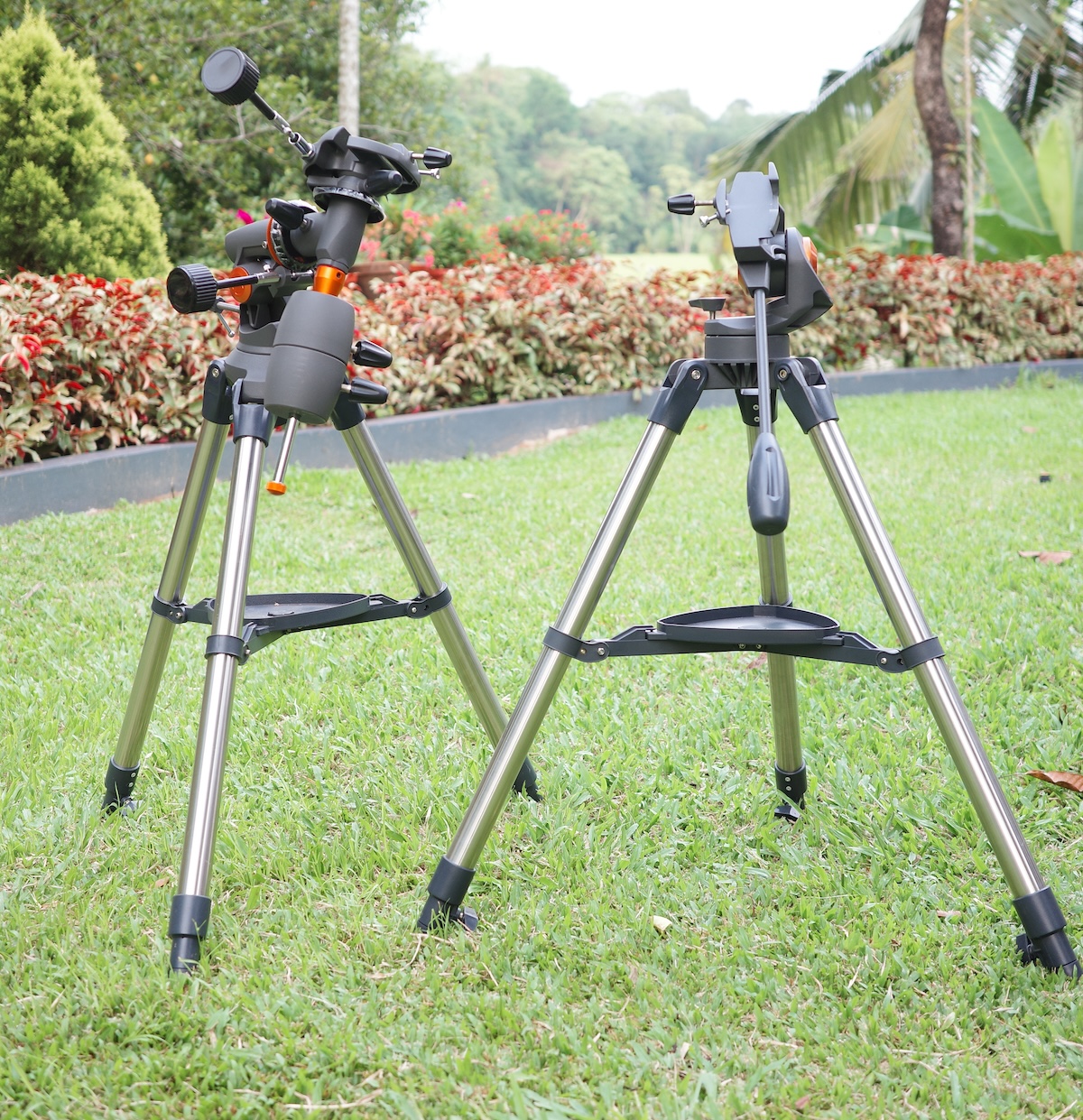
TelescopicWatch Shorts
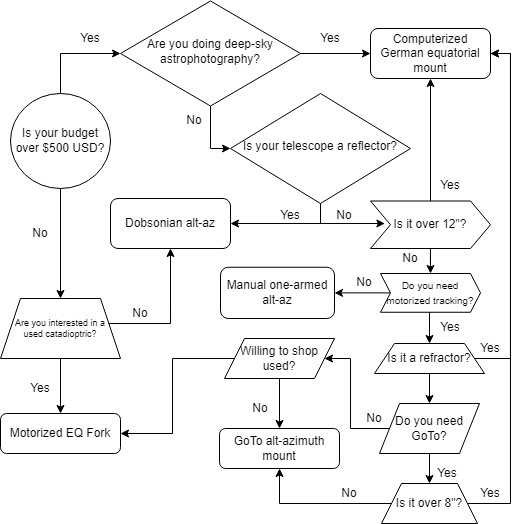
Why I Recommend Alt-Az Mounts (And When EQ Makes Sense)
Generally, I strongly recommend Dobsonian alt-azimuth mounted telescopes to beginners.
Manual tripod-mounted alt-azimuth mounts (fork or one-armed fork) are great for use with refractors as well as smaller reflecting and catadioptric telescopes. What I don’t like about these is that a good such alt-az mount can be somewhat expensive, and very cheap ones often have an outboard design, making aiming frustrating. There are also computerised (GoTo or PushTo) alt-azimuth mounts that add (or help in) tracking, but I don’t think they are very necessary for smaller aperture telescopes.
In general, I’d only recommend a German equatorial mount for larger refractors and Schmidt-Cassegrains or for deep-sky astrophotography. For everything else, the alt-azimuth mount design is king.
Many cheap tripod-mounted telescopes are less-than-steady due to low-quality tripods and often have lots of backlash and other issues in the mount. This is particularly true with cheap German equatorial mounts (GEM). You are not going to be doing long-exposure deep-sky astrophotography with a German equatorial mount costing much less than ~£1,000, so don’t choose your telescope based on the purported advantages of one of these equatorial mounts.
Catadioptric telescopes of 8” or larger aperture usually have very long focal lengths (which results in high magnification) and thus really need some kind of tracking and/or computerised mount. This can be either an alt-azimuth or equatorial design.
The prime advantage of an equatorial mount with a larger Schmidt-Cassegrain telescope is that an equatorial mount can be separated from the telescope tube and dismantled. In contrast, a computerised fork mount is heavy, bulky, and must remain attached to the tube, which can be extremely difficult to transport without help.
However, what I love about alt-azimuth forks is that they are steadier, keep the eyepiece more accessible, and are less complex to actually set up than a German equatorial mount (GEM). Also, you can convert many computerised alt-azimuth fork mounts to an equatorial fork mount with an equatorial wedge for deep-sky astrophotography, though.
Telescope mounts come in two main configurations: altitude-azimuth (also known as alt-az) and equatorial.
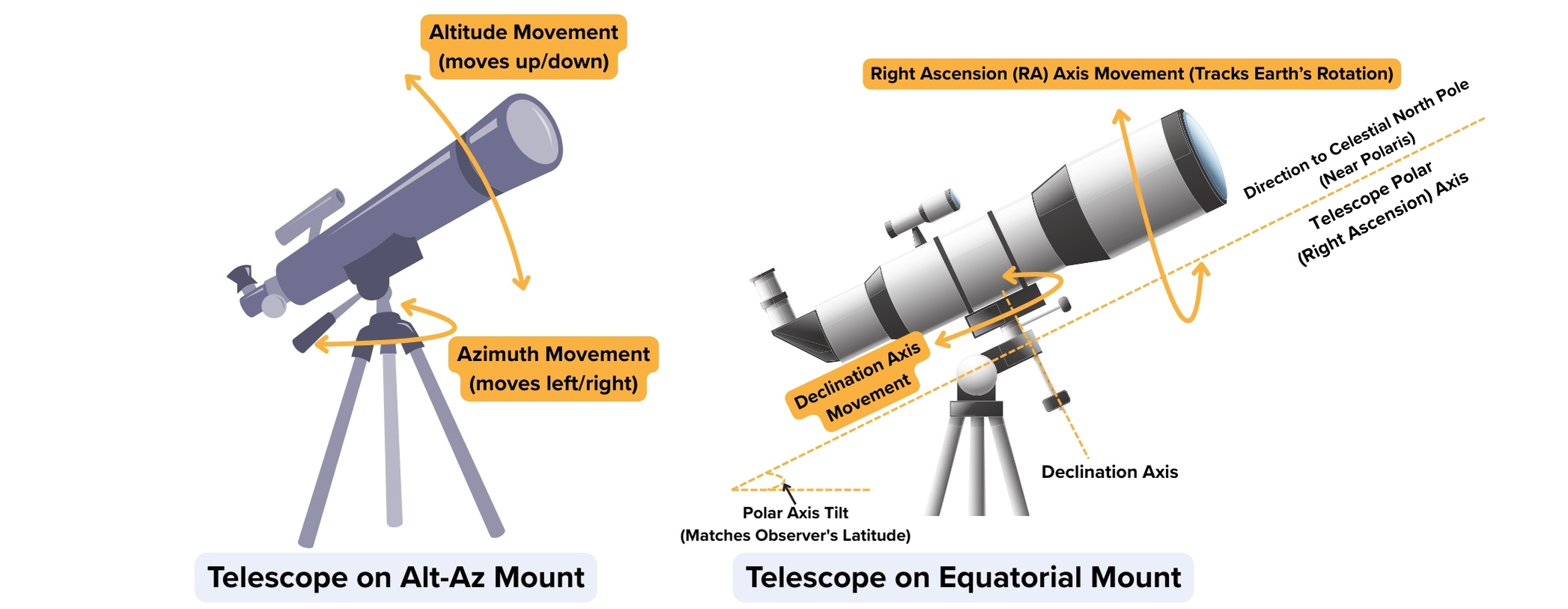
Equatorial Mount
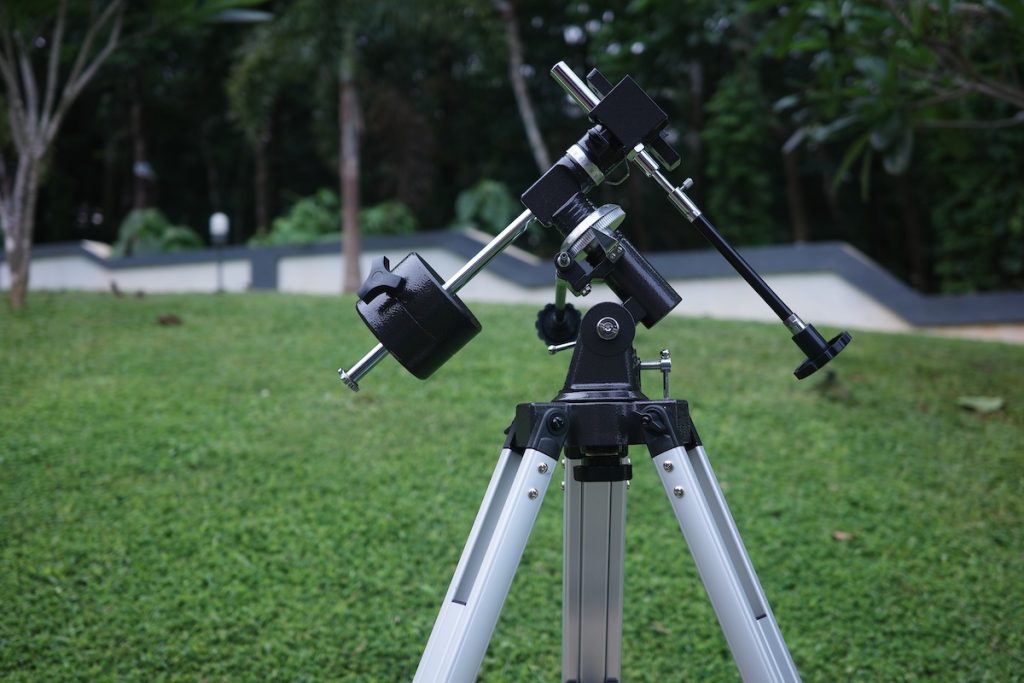
An equatorial (EQ) mount is a type of mount used for telescopes (and sometimes cameras) that allows the instrument to move in a way to easily follow the rotation of the Earth. It does this by rotating along a single axis, called the right ascension (RA) axis, which must first be aligned with Earth’s rotational axis through a process known as polar alignment.
An equatorial mount tracks objects by rotating the RA axis westward across the sky as the object moves—either manually by turning a fine-adjustment knob or automatically using a simple “clock drive”, a motor that spins the entire right ascension axis at the same speed as the Earth’s rotation.
The other axis, declination (DEC), allows for pointing adjustments in the north-south direction during the initial targeting of an object.
Altitude-Azimuth Mount

An altitude-azimuth (alt-az) mount, on the other hand, is a type of mount that allows an instrument to move along two axes: altitude (up and down) and azimuth (left and right).
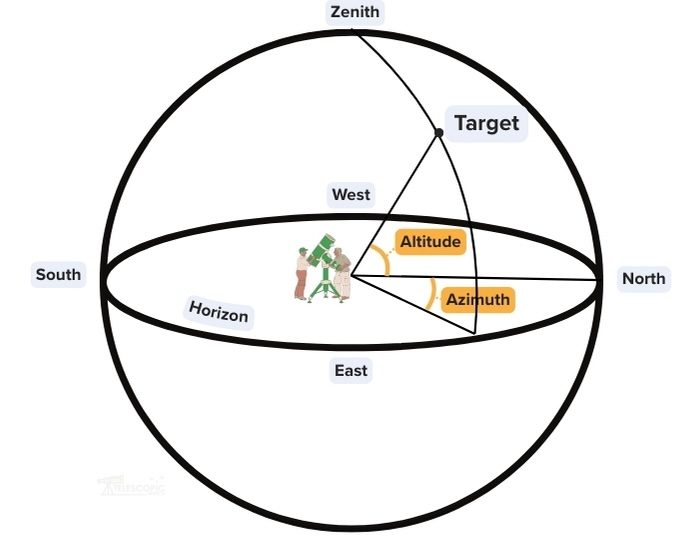
This type of mount is simpler than an equatorial mount to comprehend but requires constant adjustment in both directions, which must be varied depending on where the telescope is pointed (objects near the horizon move faster, while those near the zenith experience very little altitude change). As such, alt-azimuth mounts can only track the sky automatically if they have a more complex computerised pointing system, unlike equatorial mounts, which can use a simpler motorised system.
However, even with computerised tracking, alt-azimuth mounts are difficult to use for long-exposure astrophotography, as the target object appears to flip on its side as the telescope tracks. Additionally, making automatic guiding adjustments for tracking accuracy is more difficult with alt-az mounts.
In very large telescopes, alt-azimuth mounts are generally used in conjunction with special tools like field derotators for long-exposure astrophotography. For 16” or larger apertures, an equatorial mount would simply be too difficult to construct or house, making derotators and other expensive measures the better solution.
Hybrid Equatorial Mount
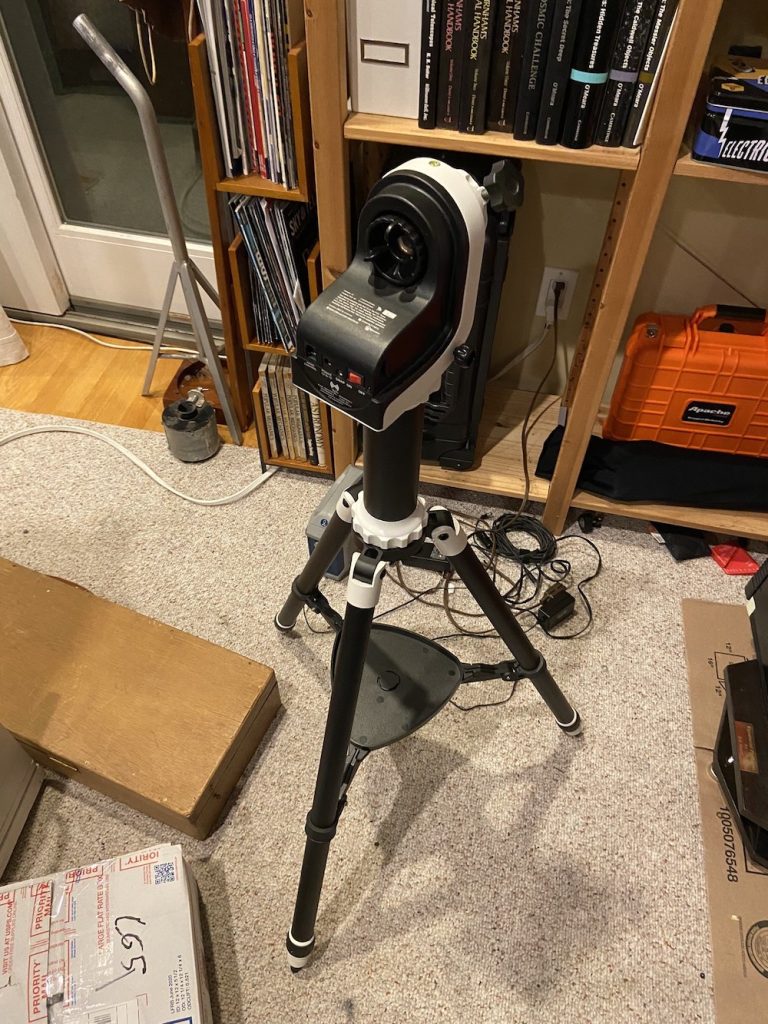
A third configuration, the “hybrid” equatorial mount, essentially an alt-azimuth mount that can be “tilted” into an equatorial configuration, also exists. I found some of these mounts to be very good (and also rather expensive), while many are sub-par. However, they may be the ideal fit for your needs. If not, you could always just purchase two separate mounts, since the dovetail bars most telescopes use to attach to mounts are interchangeable without tools.
Why Equatorial Mounts Are (Mostly) for Astrophotography
Overall, an equatorial mount is more suitable for tracking objects in the sky over long periods of time for astrophotography, which is really the only reason to buy one, while an altitude-azimuth mount is more suitable for visual observations and is definitely what you want for your first telescope.
Equatorial mounts were once seen as the only form of “serious” telescope mount. This was because telescopes used to have long tubes that shook in the wind or when adjusted, along with eyepieces that had narrow fields of view, requiring the telescope to be nearly perfectly centred on a target. So making fewer pointing adjustments, which is the signature feature of equatorial mounts, was a huge plus.
However, today’s eyepieces have much wider fields of view, and the designs of alt-azimuth mounts have come a long way. Additionally, computerised pointing is now available for both equatorial and alt-azimuth designs. As such, the advantages of an equatorial mount are really only beneficial for astrophotography these days.
Alt-azimuth mounts are cheaper, simpler, and easier to use than equatorial mounts if built to any decent standard of quality.
Equatorial mounts are largely only necessary for telescopes where either an alt-azimuth mount would be impractical to transport in some way or if motorised tracking is required for astrophotography or some other purpose.
